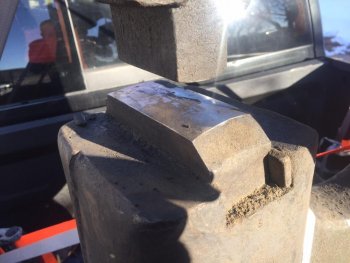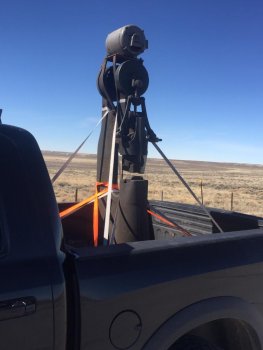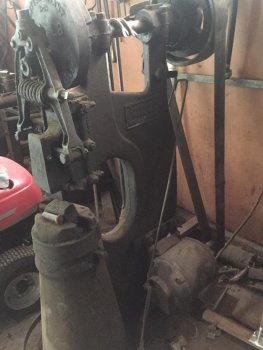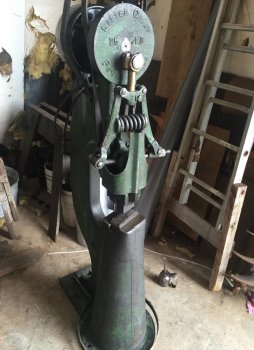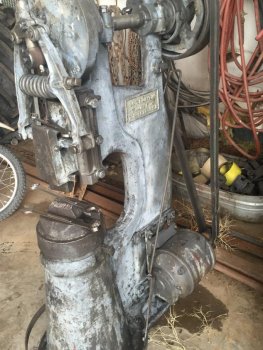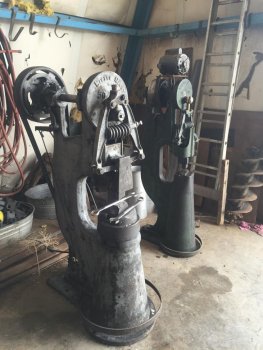Prior to going to the air hammer, I had both a 25 and a 50lb LG in the shop. Mine were just the opposite.... the 25lb was a "new" model, and the 50 was the "old" model (new has the dovetail guides and the removable sow block for the bottom die. The old style has no sow block, and has the wrap around guide) Comparing the two types, I personally like the "new" style far more then the "old" style. The "new" style has far better adjustability, and always held it's adjustment better/longer then the "old" style.
If you put them into use, some important things I can tell you are...... 1. KEEP THEM LUBED.... like I said previously, if the oil/grease isn't running off of them, then they need lubed. 2. Depending on how much you use them, they require frequent adjustment. When I was running them in my shop, there was an hour set aside each Monday morning to adjust the hammers. (it's just the nature of these machines, they were intentionally designed/built with "slop" in them) 3. Pay CLOSE attention if you ever have to replace parts, especially the pins/bolts....DO NOT just grab a pin/bolt from the hardware store. These are generally too hard and will wear into the major parts....the pins/bolts need to be "soft", so that pins/bolts will wear instead of the major components. One of the best things I did with the 25lb LG I had was to replace the babbit (it needed rebuilding when I got it), with bronze. I replaced both the main bearings, and the flywheel bearing with bronze. It took some work, as I had to keep "fitting" until I finally got about .040" of "slop"...what I didn't take into consideration at first was that the bronze bearings required room for oil/grease.....and until I got to .040" of "slop" in the bearing fit, the hammer was locked up when I turned it on. Once I got the bearing thing figured out, that little hammer ran like a singer sewing machine.
And finally, a safety note. Build some type of guard/shield that covers the main spring when the hammer is in use. The most frequent part that breaks on these hammers is the spring(s).....and without a guard, pieces of those springs become missiles. If/when a spring breaks, it's normally in three pieces, one shoots down to the left, the other shoots down the right, and a large shard shoots straight out... generally right inline with where you're head/face would be. Back when I first started Smithing, there was always someone getting injured from the spring breaking in a LG. You don't hear much about it today, simply because LG hammers are not as plentiful/in use as they used to be.

